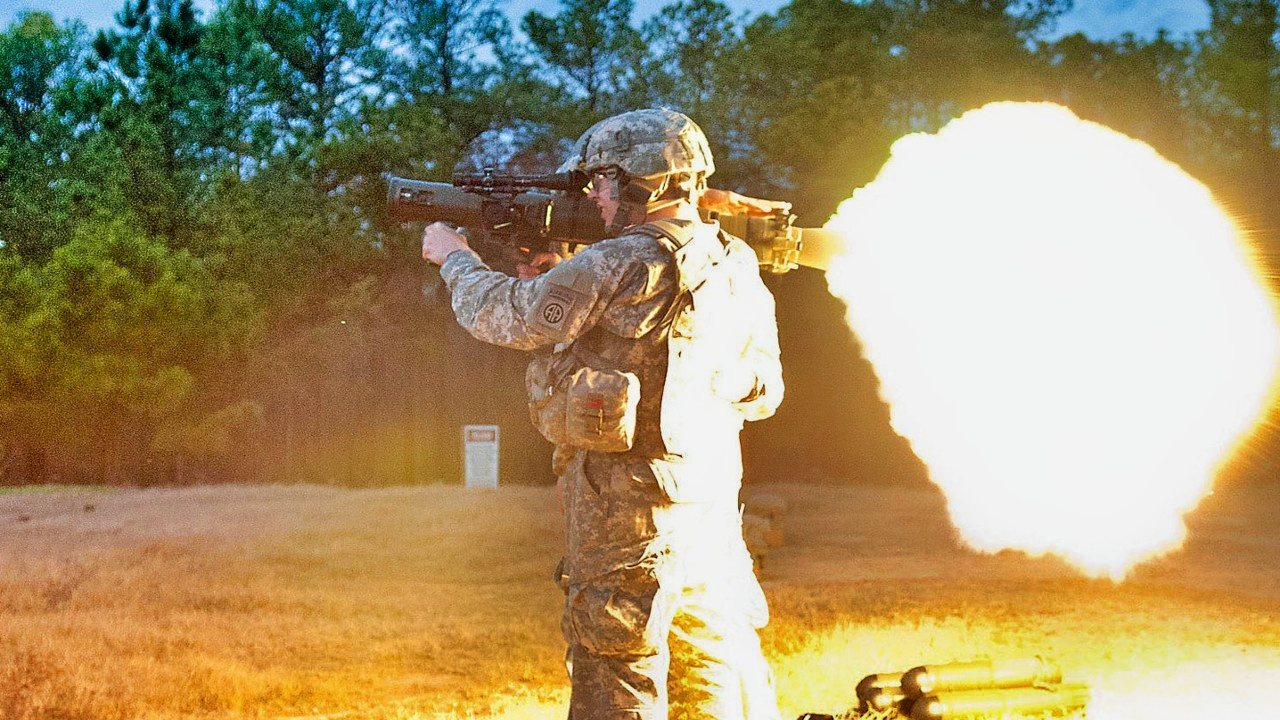Carl Gustaf Recoilless Rifle Is a 'Bazooka' Tank-Killer Like No Other
The Carl Gustaf is a mobile weapon, yet it can still pack a punch when launched. Equipped with propellant gas to ease the force of the projectile once fired, the weapon can be safely operated by soldiers.
Meet the Carl Gustaf: Since February 2022, Russia’s arsenal of military systems have been largely obliterated. From main battle tanks and airframes to munitions and drones, Moscow has lost scores of its weapons at the hands of Kyiv’s domestic and Western-imported stockpile.
The U.S. and its North Atlantic Treaty Organization (NATO) allies have provided Ukraine with billions of dollars’ worth of military aid to aid its defensive efforts. While the most recognizable systems deployed to the front lines include the American-made FGM-148 Javelin and HIMARS, one Swedish made weapon should not go unnoticed.
The Carl Gustaf recoilless rifle has proven to be a significant asset for Ukrainian troops amidst its counter-offensive.
Introducing the Carl Gustaf
Initially conceptualized by Sweden in the 1940’s, the Carl Gustaf 84mm recoilless rifle was inspired mainly by the effectiveness of shoulder fired anti-tank weapons from the Second World War. The success of both the Bazooka and the Panzerschreck led engineers to experiment with recoilless designs.
Over the years, the weapon would ultimately land in the international market and was later merged into Saab Bofors Dynamics which continues to produce and export the rifle today.
The Carl Gustaf has been deployed in various conflicts since its introduction to service, including the Congo Crisis in the 1960’s and the War in Afghanistan.
Considered by many analysts and industry experts to be a “super-gun,” the Carl Gustaf can flawlessly obliterate bunkers, armored vehicles and enemy battle tanks. Perhaps the most important quality the rifle possesses is its design.
The Carl Gustaf is a mobile weapon, yet it can still pack a punch when launched. Equipped with propellant gas to ease the force of the projectile once fired, the Carl Gustaf can be safely operated by soldiers. High-explosive warheads can be launched by the rifle to distances over 1,500 feet. The Gustaf can also be fired using a laser rangefinder, which programs rounds to explode at specific distances around a target area.
When the formidable rifle was first released, manufacturer Saab North America revealed that the lightweight rifle could fire up to six rounds per minute. Operators can fire star shells from the Gustaf to provide illumination during the night, in addition to High Explosive Anti-Tank (HEAT) and High Explosive Dual Purpose rounds.
Other enhancements that the Carl Gustaf possesses over its predecessors has been detailed by its manufacturer. To name a few, the rifle is more compatible with intelligent sights, has a reduced weight, a faster reload and an adjustable shoulder rest.
How is the Carl Gustaf doing in Ukraine?
The Carl Gustaf’s most prominent flaw may be its hefty price tag.
Each rifle costs around $20,000 dollars. Last year, the U.S. Army spent almost $90 million purchasing these dual rifle-rocket launchers. Even Ukrainian forces have recognized the lethality the Carl Gustaf brings to its war efforts. According to Ukraine’s Ministry of Defense, one of these rifles was responsible for the destruction of a Russian T-90 MBT last year.
Since Moscow’s invasion first began some 600+ days ago, the Gustaf, along with other NATO-delivered military systems, have proven to be effective tools in diminishing Moscow’s capabilities.
The T-90 is Russia’s most sophisticated platform being deployed to the frontlines in Ukraine. The fact that Carl Gustaf can take down one of these MBTs is a considerable feat.
For some perspective, Army Technology has detailed some of the T-90’s abilities:
“The T-90S armament includes one 125mm 2A46M smoothbore gun that is stabilised in two axes and fitted with a thermal sleeve. The gun tube can be replaced without any dismantling inside the turret. The gun can fire a variety of ammunition, including Armour Piercing Discarding Sabot (APDS), high-explosive anti-tank (HEAT) and high-explosive fragmentation (HE-FRAG), as well as shrapnel projectiles with time fuses.The T-90S gun can also fire the 9M119 Refleks (NATO designation AT-11 Sniper) anti-tank guided missile system. The range of the missile is 100m to 4,000m and takes 11.7 seconds to reach maximum range.It is intended to engage tanks fitted with explosive reactive armour (ERA), as well as low-flying air targets, such as helicopters, at a range of up to 5km. The missile system fires either the 9M119 or 9M119M missiles, which have semi-automatic laser beam-riding guidance and a hollow charge warhead. The missile weight is 23.4kg. The guns’ automatic loader can feed both ordnance and missiles.”

A Wall Street Journal report in February outlined a study conducted by a London-based think tank surrounding Russia’s tank arsenal. At that point in the war, more than half of Moscow’s fleet of armored vehicles had been wiped out. From Soviet-era relics to newer and more advanced platforms, these MBTs could not hold up against Ukraine’s defenses.
As Kyiv’s counter-offensive trudges on, the Carl Gustaf will certainly continue to be deployed.
Maya Carlin is an analyst with the Center for Security Policy and a former Anna Sobol Levy Fellow at IDC Herzliya in Israel. She has by-lines in many publications, including The National Interest, Jerusalem Post, and Times of Israel. You can follow her on Twitter: @MayaCarlin.


